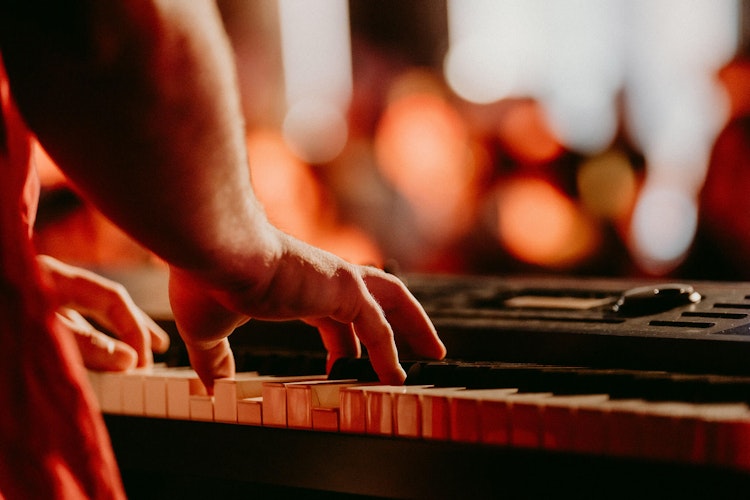It can be easy to understate the piano’s contributions to rock and roll. When most people think about the genre, the piano is likely not the first instrument that comes to mind. Considering that many successful rock bands have no keyboard player at all, it can seem almost non-essential. However, when utilized properly, the piano is good for more than just Bach and Beethoven and can liven up any rock sound with its percussive and melodic qualities. Electronic keyboards and synthesizers can open doors to even more sonic possibilities while still functioning as the same basic instrument. Because the piano is such a versatile instrument, it can be difficult to know where to begin. The techniques outlined in this article will provide insight to anyone who is interested in sharpening their rock piano skills and gaining a better understanding of one of the underappreciated stars of rock and roll music.
Understanding the Right Hand
When playing piano, much of your technique should be similar regardless of whether you are using your right hand or your left hand. You will typically be using them both together, but each hand has its own role to play in what it can bring to the music. Because of the layout of the piano, the right hand is generally going to be playing on the higher side, bringing out the treble sounds through chords (multiple notes played at once) or melodies. The left hand often acts as an accompaniment, or secondary part, supporting the right hand.
Proper finger technique is vital for not getting your fingers tangled up in knots - this especially applies to the right hand as it is often doing much of the heavy lifting with chords, arpeggios (notes of a chord played one after the other), and melodies. In Led Zeppelin’s “Fool in the Rain,” the right-hand piano part plays through quick chord changes as well as melodic parts that complement the vocal line.
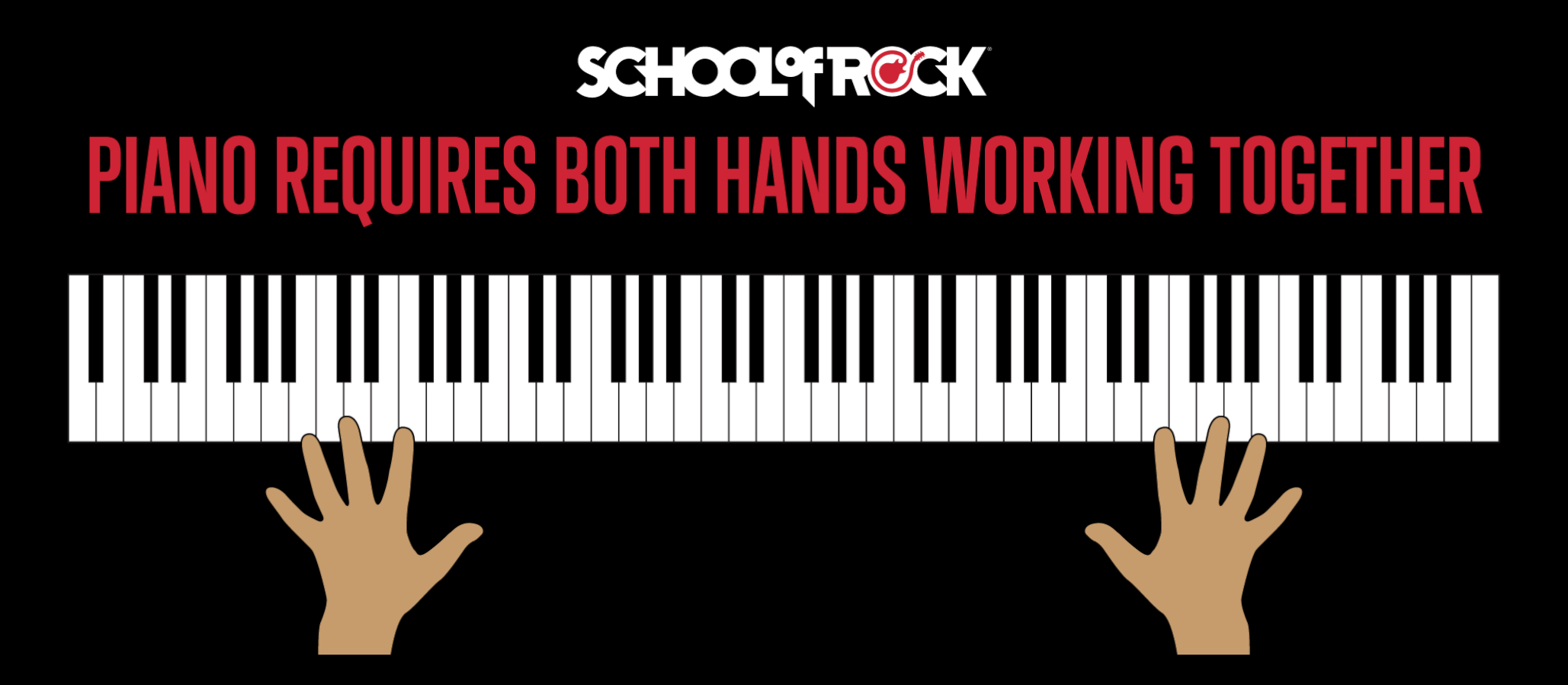
The Old School Left-Hand Rhythm
Many of the first breakout rock and roll hits utilized piano as a primary instrument, often using a signature left-hand rhythmic pattern known as “boogie woogie.” Like much of the rock and roll canon, boogie woogie has its origins in African-American music. Grasping this technique is not only important for understanding the origins of rock music, but it’s also a great trick to have up your sleeve to liven up any basic rock tune. The boogie woogie pattern in the left hand consists of a repetitive “walking” bass line, that is a bass line which outlines the chord while also using other notes from the scale to transition to the next chord, all using a consistent rhythm and creating a feel of forward motion (the “walk”). This old-school left-hand rhythm is featured prominently in “Tutti Frutti” by one of rock piano’s greatest, Little Richard.
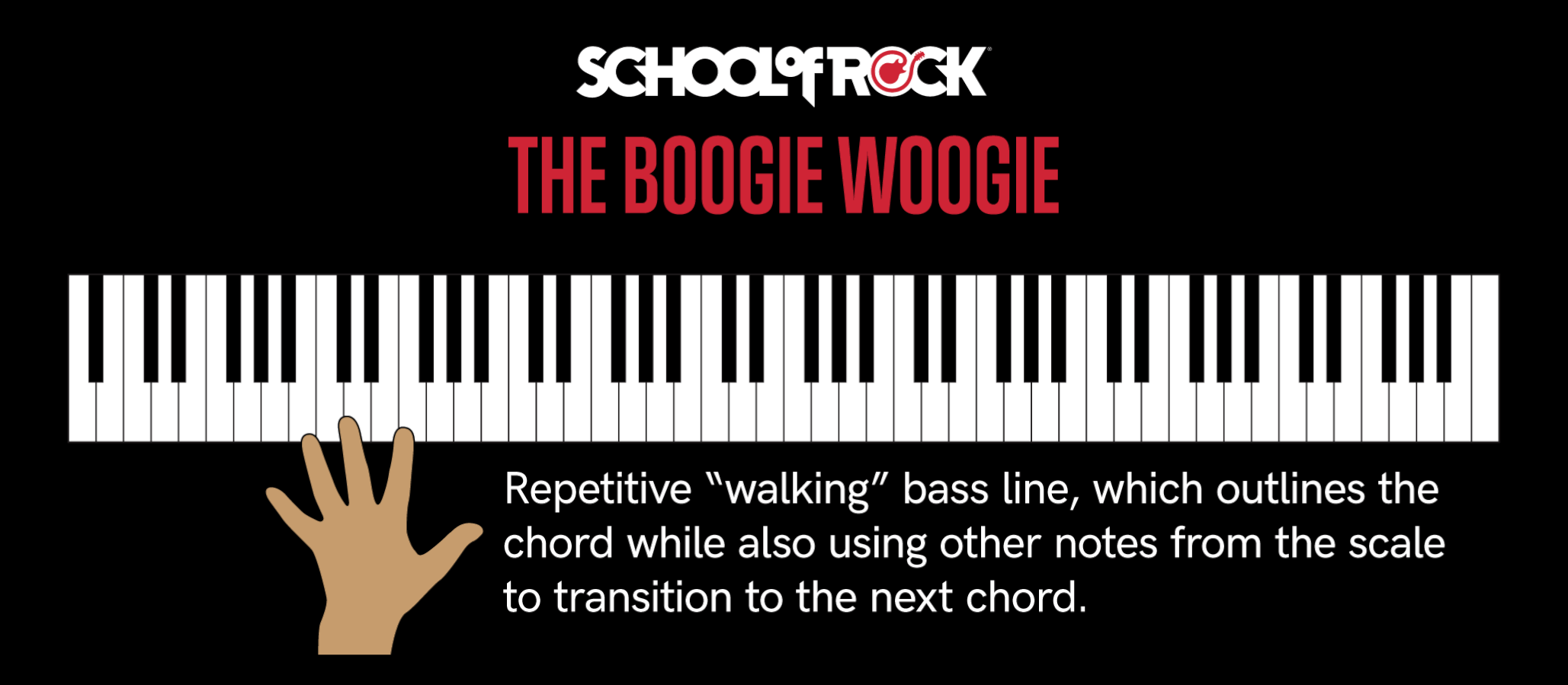
Chord Progression
A song may have a different chord progression for each section (verse, chorus, etc.) while some songs maintain the same few chords the entire time. Every song has a chord progression, and often the role of the piano is to outline those chords very clearly. Starting to learn chords on the piano can be overwhelming, but the most commonly used chords are only made up of three notes each; these chords are called triads. “Let It Be” by The Beatles features a strong, fairly repetitive chord progression made up of mostly triads which serves as an anchor for the song.
Once you have started to get the hang of triads in their root position (playing them starting from the “root” or primary note), you will want to start exploring inversions (playing the same notes for each chord, but rearranging the notes so that they are stacked in a different order). Because of the layout of the piano, the instrument has a lot of potential to create rich harmonic textures and chord voicings that can be difficult to achieve on other instruments.
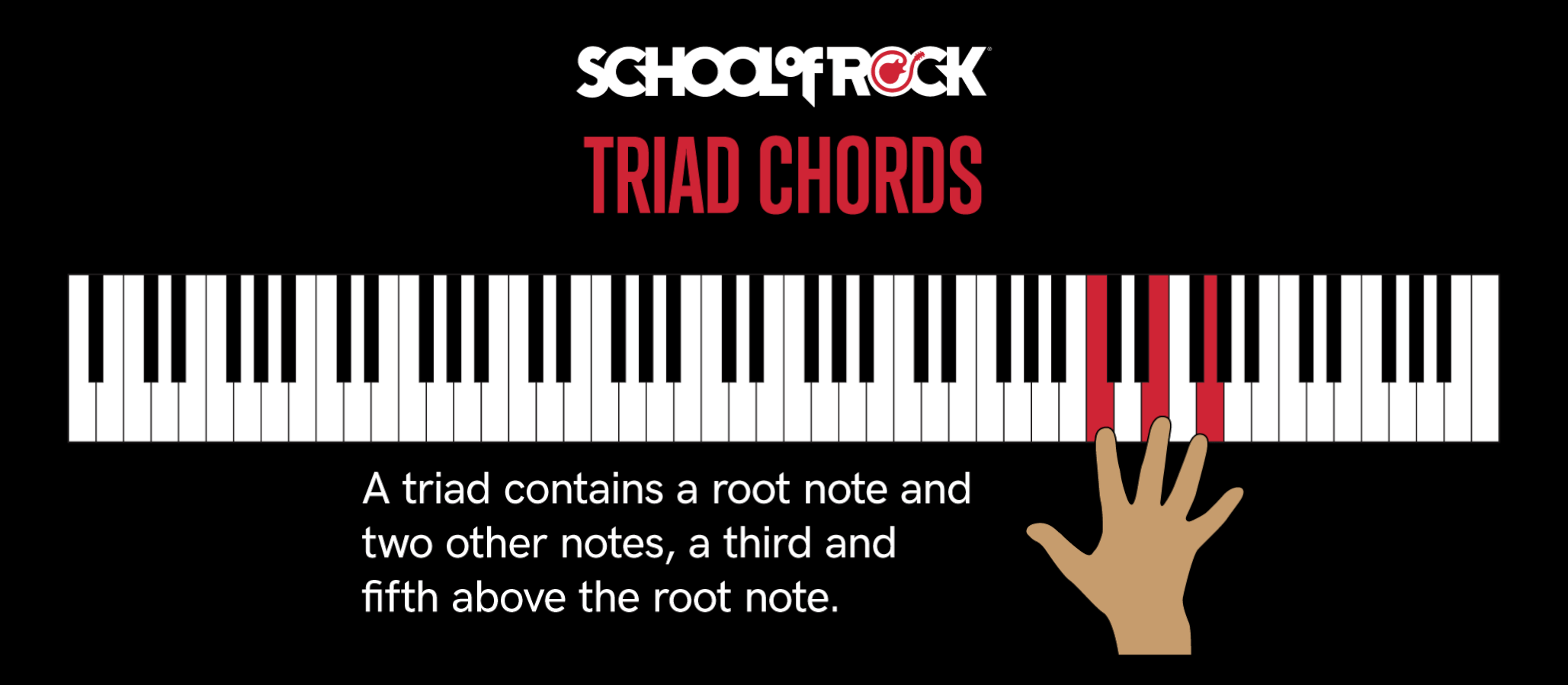
Classic Rock Fill
Fills in music are short passages played between the phrases of a melody. Piano fills are a great way to keep the listener engaged during breaks in the vocal melody or chord progression. A good fill can come in handy especially when the structure of a song is simple or repetitive. One hand (often the left) can maintain a steady pattern while the right hand plays fills, energizing the song with creativity and spontaneity. Elton John’s classic “Bennie and the Jets” makes use of piano fills between vocal lines.
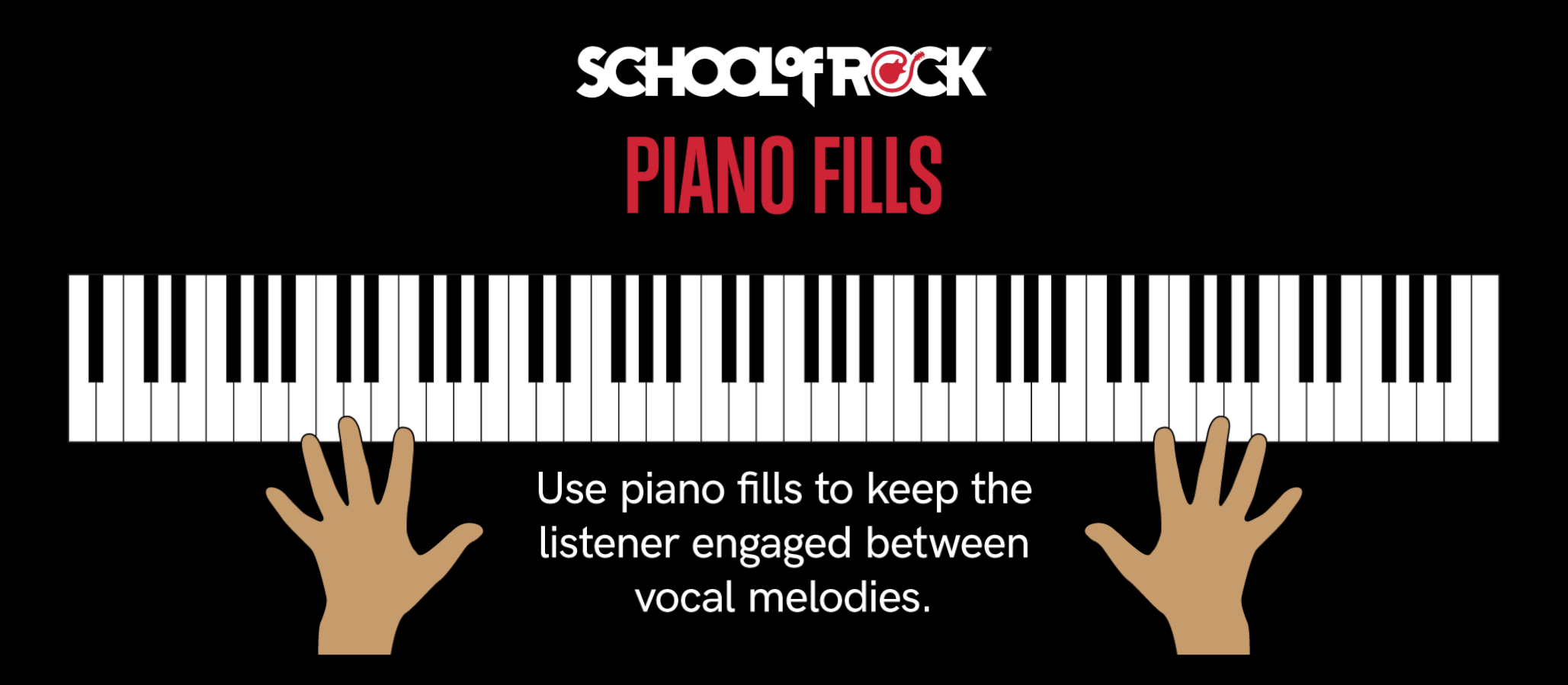
Grace Notes
The use of grace notes is another relatively simple technique that is often used to energize keyboard solos, especially in blues and similar styles of music. A grace note is a note that acts as an embellishment (or addition) to the melody. These notes are played incredibly quickly to give the listener the impression of one note “sliding” into the next. The solo sections in “What’d I Say” by Ray Charles feature grace notes that add substance to the melodic lines.
Glissandos
A glissando in music is a continuous slide upward or downward between two notes. Often on the keyboard, this is a big distance - many times a glissando will span the entirety of the white keys on the keyboard. The glissando is primarily used in upbeat music and is a prominent feature of many older rock and roll songs. A properly placed glissando can keep the energy up and surprise the listener. The Beatles’ cover of “Rock and Roll Music'' by Chuck Berry contains a prime example of a classic rock piano glissando. The intro to Dexys Midnight Runners’ hit “Come on Eileen,” while very different stylistically, also features a prominent glissando on the keys.
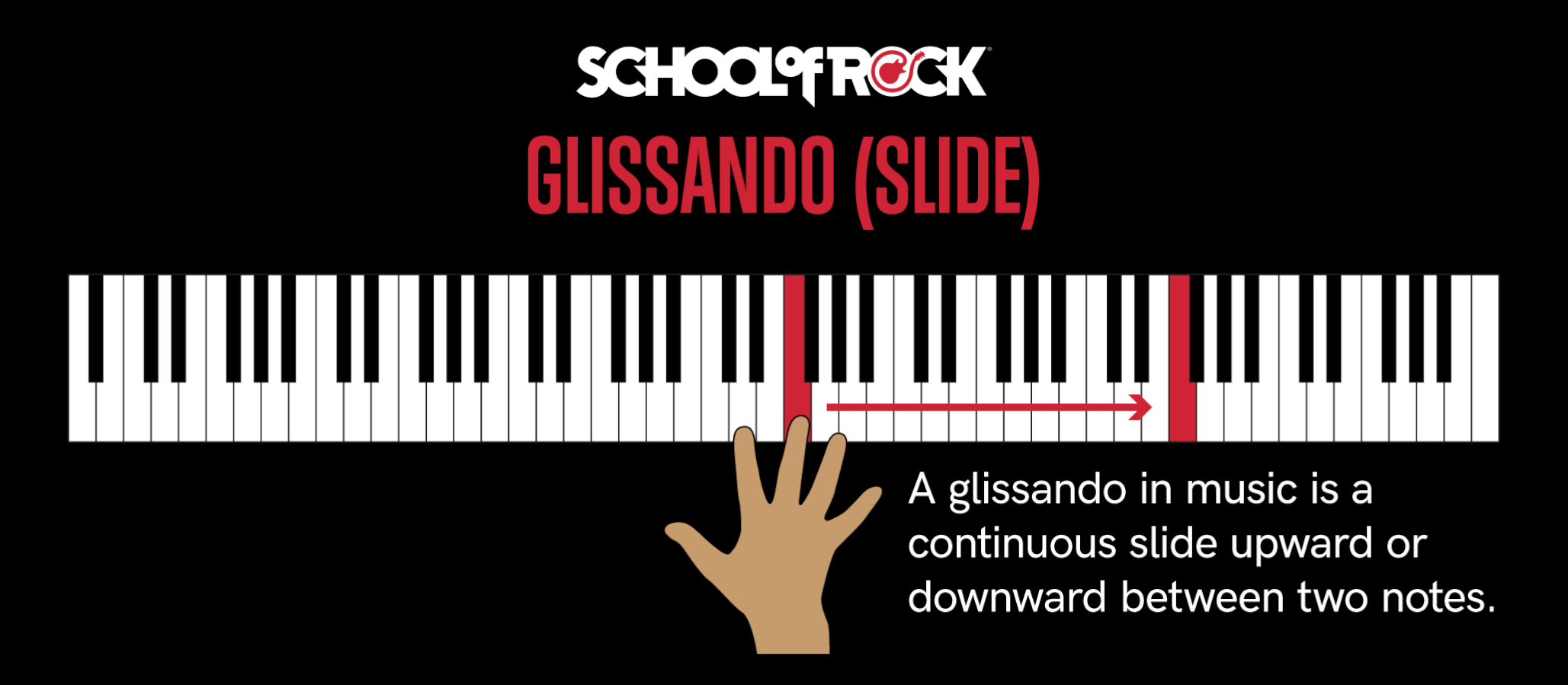
Rock Piano Grips
Piano “grips” are common voicings that you can visualize across the keyboard to help with playing common types of chords. The grip system provides an easy way to start approaching seventh chords, four-note chords which contain a “seventh” note, creating a richer harmonic texture). A good understanding of these piano grips will require basic knowledge about how certain intervals (distances between notes) appear on the keyboard but can enhance your understanding of music theory down the line as you learn which chords correspond to certain keys or scales.
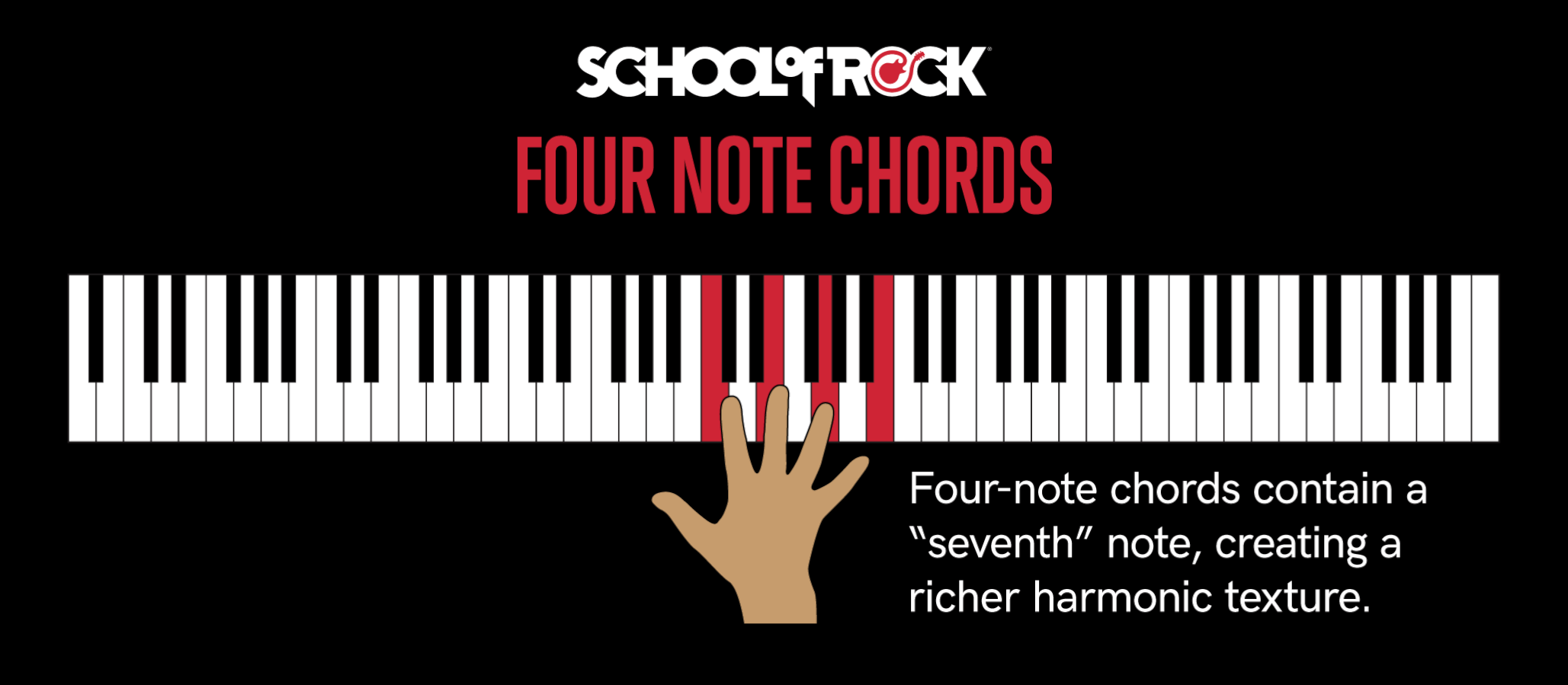
At School of Rock, our keyboard teachers get students to love the keyboard (and piano) by teaching them to play popular rock songs while implementing basic concepts and skills like finger placement, scales, pedaling, key differentiation, and rhythm. Learn more about keyboard and piano lessons at School of Rock.
About the Author
Kaylie King teaches students how to play the guitar and keyboard at School of Rock New Braunfels.



